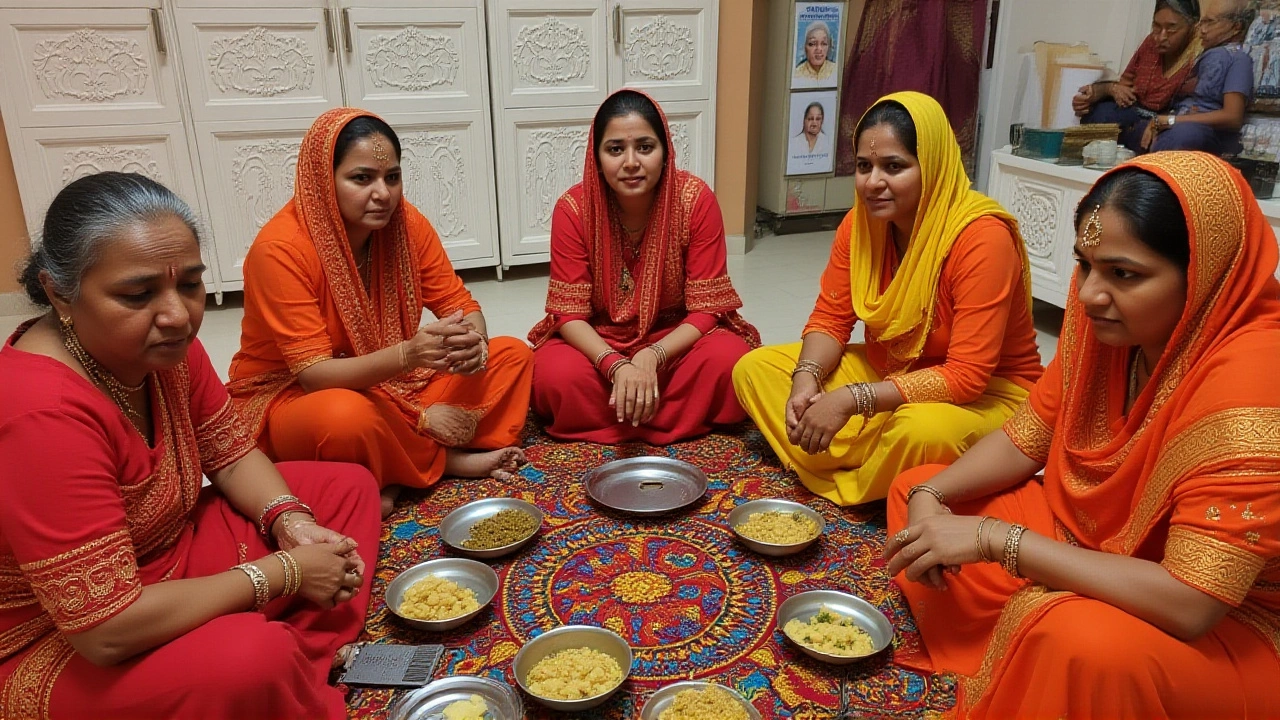Ahoi Ashtami: Meaning, Rituals and Modern Relevance
When observing Ahoi Ashtami, a Hindu fast dedicated to protecting children and honoring the Mother Goddess. Also known as Ahoj Ashtami, it falls on the eighth day of the waning moon in the month of Kartik. The festival brings families together to pray for the health of newborns and ask for divine shelter against accidents. It’s not just a ritual; it’s a cultural promise that children will grow safe and strong.
The celebration centers on Mother Goddess Ahoi, the protector of infants and young kids in Hindu lore. Devotees set up a small altar, light a lamp, and chant verses that ask Ahoi to watch over their little ones. This act connects the family’s daily life with a higher guardianship, turning a simple prayer into a lasting bond.
The key practice is a strict fast, abstaining from grains and eating only fruits, nuts, and specific sweets. The fast requires participants to avoid wheat, rice, and pulses, while allowing milk, curd, and seasonal fruits. Around sunset, the fast is broken with a special offering of “Ahila”—a sweet made from jaggery, coconut, and poppy seeds. This ritual demonstrates how discipline in diet can be a form of devotion.
Regional Flavors and Local Customs
In Maharashtra and parts of Uttar Pradesh, families perform a unique “Puja of the Seven Children”, placing tiny figurines of children on a plate of grains and feeding them with the same sweets used to end the fast. The act symbolizes an oath to protect all children in the community, not just one’s own. In Rajasthan, the observance extends to a community feast where neighbors share the same sweet dish, reinforcing the collective responsibility for child welfare.
Another important entity in the festival is the lunar calendar, which determines the exact date of Ahoi Ashtami each year. Because the festival follows the waning phase of the moon, its timing shifts annually, reminding participants that life’s cycles are always in motion. This connection between celestial patterns and human rites illustrates how ancient traditions align with natural rhythms.
Modern families often blend the traditional fast with contemporary concerns. Many parents use the occasion to schedule pediatric check‑ups, echoing the festival’s core promise of child health. Schools in urban areas sometimes organize awareness drives about nutrition and safety on Ahoi Ashtami, turning a religious observance into a public‑health message. This evolution shows how a centuries‑old rite can stay relevant in today’s fast‑paced world.
Beyond the fast and puja, the festival also highlights the role of community support, the collective effort to safeguard children within a neighborhood. When families share sweets, exchange blessings, and look after each other’s kids, they create a safety net that extends far beyond the altar. That communal spirit enables the festival to serve as a reminder that protecting children is a shared duty.
Below you’ll find a curated list of stories, updates, and practical tips that dive deeper into Ahoi Ashtami’s rituals, regional variations, and modern adaptations. Whether you’re planning your first puja, looking for a simple fast menu, or curious about how the festival impacts child welfare today, the collection offers clear, actionable insights to help you celebrate with meaning and joy.
Jhajjar Mothers Celebrate Ahoi Ashtami 2025 with Star‑Sighting Fast
Mothers in Jhajjar, Haryana, gathered on Oct 13, 2025 to fast for their children, listening to the Ahoi Ashtami story and breaking the fast after spotting the first star.
